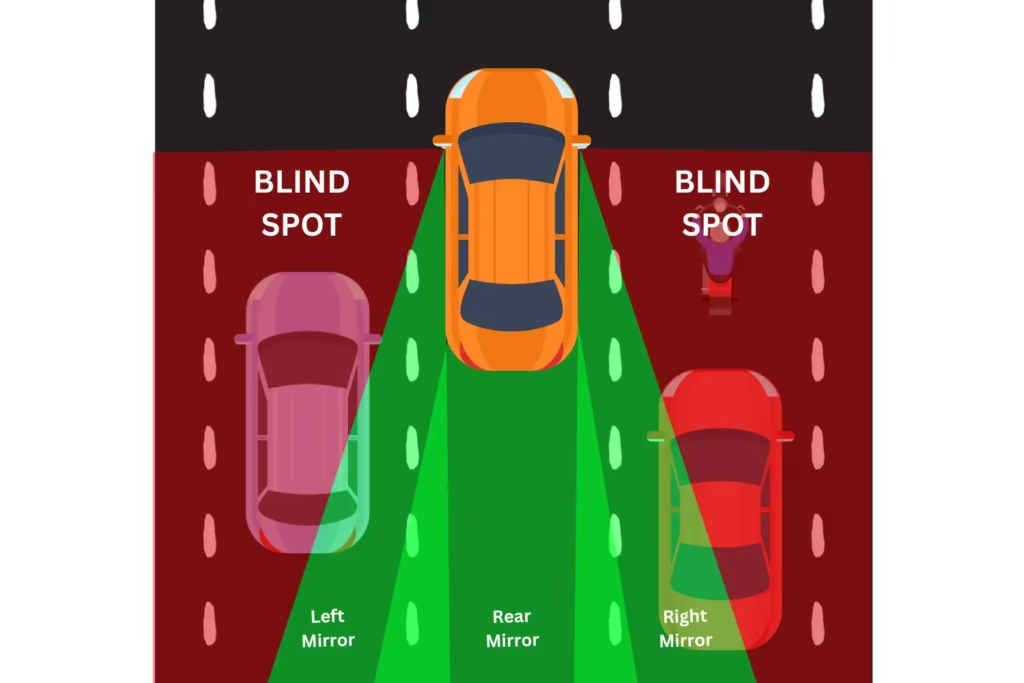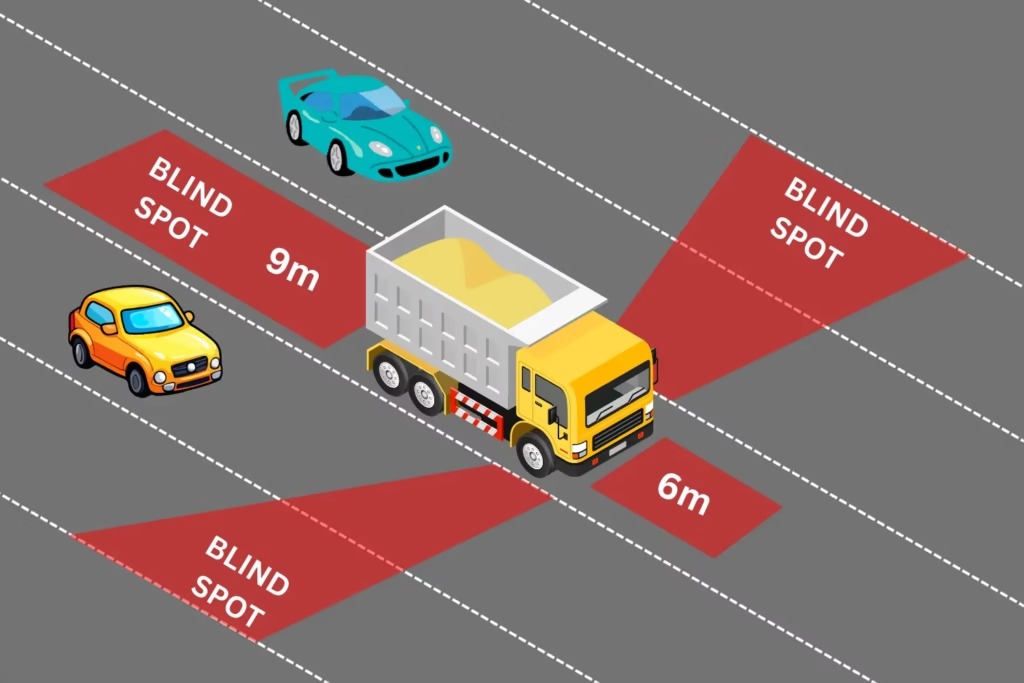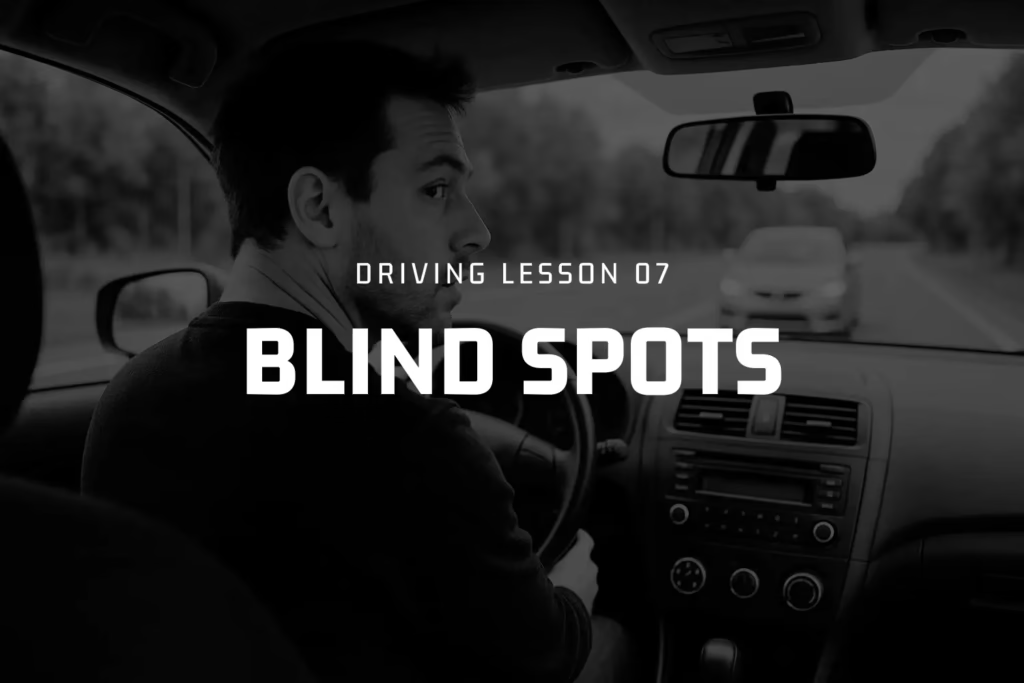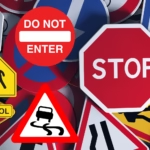If you’re learning to drive, you’ve probably heard your instructor mention blind spots many times. But what exactly are they, and why do they matter so much? Blind spots are areas around your vehicle that you can’t see using just your mirrors. Every driver has them, no matter how well their mirrors are adjusted.
Understanding blind spots and learning how to check them properly is one of the most important skills for safe driving. A failure to check blind spots is one of the leading causes of accidents, especially during lane changes, merging, and overtaking.
In this guide, we’ll explain everything you need to know about blind spots, how to check them correctly, and tips to stay safe on the road.
What Are Blind Spots?
A blind spot is an area around your vehicle that is not visible in your rearview mirror or side mirrors. These hidden zones make it difficult to see other vehicles, motorcycles, cyclists, or even pedestrians.
Where Are the Blind Spots?
On the sides of your car – Usually towards the rear left and right corners.
Directly behind large vehicles – Trucks, buses, and SUVs often create extended blind spots.
Pillars of the car (A, B, and C pillars) – These can also block small areas of your view.
No matter how you position your mirrors, you will always have some blind spots. That’s why physically checking them is crucial.

Why Blind Spots Are Dangerous
Blind spots are dangerous because they can hide other road users from your view. Imagine changing lanes on the highway, thinking it’s clear, only to realize too late that a car or motorbike was right beside you.
Some common risks include:
Lane changing accidents – The most common blind spot crashes.
Collisions with motorcycles and bicycles – They are small and can disappear completely in a blind spot.
Pedestrian accidents – People crossing behind your car when reversing.
Overtaking misjudgments – Not spotting a fast-approaching vehicle.
According to road safety studies, over 800,000 blind spot accidents occur every year worldwide. Most could have been prevented with proper checks.
How to Check Blind Spots Properly
Checking blind spots is a simple habit, but it requires consistency. Here’s a step-by-step guide:
1. Adjust Your Mirrors Correctly
Before driving, make sure your mirrors are set up to minimize blind spots.
Rearview mirror – Position it so you can see directly out of the back window.
Side mirrors – Tilt them slightly outward so you just barely see the side of your car.
👉 Properly adjusted mirrors won’t eliminate blind spots but will reduce them significantly.
2. Use the “Shoulder Check”
The most reliable way to check blind spots is by doing a quick glance over your shoulder.
When moving left – Turn your head over your left shoulder to check.
When moving right – Turn your head over your right shoulder to check.
This movement takes less than a second but can prevent serious accidents.
3. When Should You Check Blind Spots?
You don’t need to look over your shoulder constantly, but always check before:
Changing lanes
Merging onto highways
Turning at intersections
Overtaking another vehicle
Reversing from a parking spot
Pulling out from the curb
4. Use Extra Caution in Certain Conditions
At night – Blind spots are harder to notice.
In bad weather – Rain and fog reduce visibility.
With passengers or cargo – They may block parts of your view.
When driving larger vehicles – Trucks and vans have bigger blind spots.

How to Reduce Blind Spot Risks
While blind spots can’t be removed completely, here are ways to reduce the danger:
Install blind spot mirrors – Small convex mirrors you attach to your side mirrors.
Use blind spot monitoring systems – Many modern cars have sensors that alert you.
Keep a safe distance – Don’t drive in other drivers’ blind spots.
Communicate with signals – Always use indicators before moving.
Stay alert – Never rely 100% on mirrors or technology.
Blind Spots in Different Vehicles
Blind spots vary depending on what type of vehicle you’re driving.
Small cars – Fewer blind spots but still present.
SUVs & vans – Larger blind spots, especially behind.
Trucks & buses – Huge blind spots, especially on the right side and directly behind.
Motorcycles – Riders also have blind spots and are more vulnerable.
👉 Tip: If you can’t see the truck driver’s mirrors, they can’t see you. Stay visible.

Real-Life Examples of Blind Spot Accidents
A driver changes lanes on a highway without checking blind spots and sideswipes a motorbike.
A car reverses out of a parking lot and hits a pedestrian walking behind.
A truck driver doesn’t see a small car directly next to them and pushes it off the lane.
These accidents show how small mistakes can have big consequences.
Blind spots may be invisible, but their dangers are very real. Every driver – beginner or experienced – must develop the habit of checking them before making any move on the road. A quick shoulder check can literally save lives.
So, next time you’re about to change lanes or pull out, remember: Mirrors, Signal, Shoulder Check. It only takes a second, but it could prevent a lifetime of regret.
Discover more from SMOOTHSTEERING
Subscribe to get the latest posts sent to your email.




Pingback: Beginner’s Guide to Road Signs in Latvia